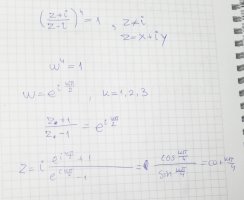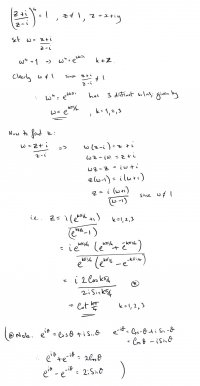I seem to be confused when it comes to understanding how they solved the following problem. I don't understand what happenes after e comes in, and how it comes in. I would prefer an explanation for this way, however, if you have easier or better methods tell me that too. Thanks in advance.

I don't have the original problem. These are notes I was given.

I don't have the original problem. These are notes I was given.

